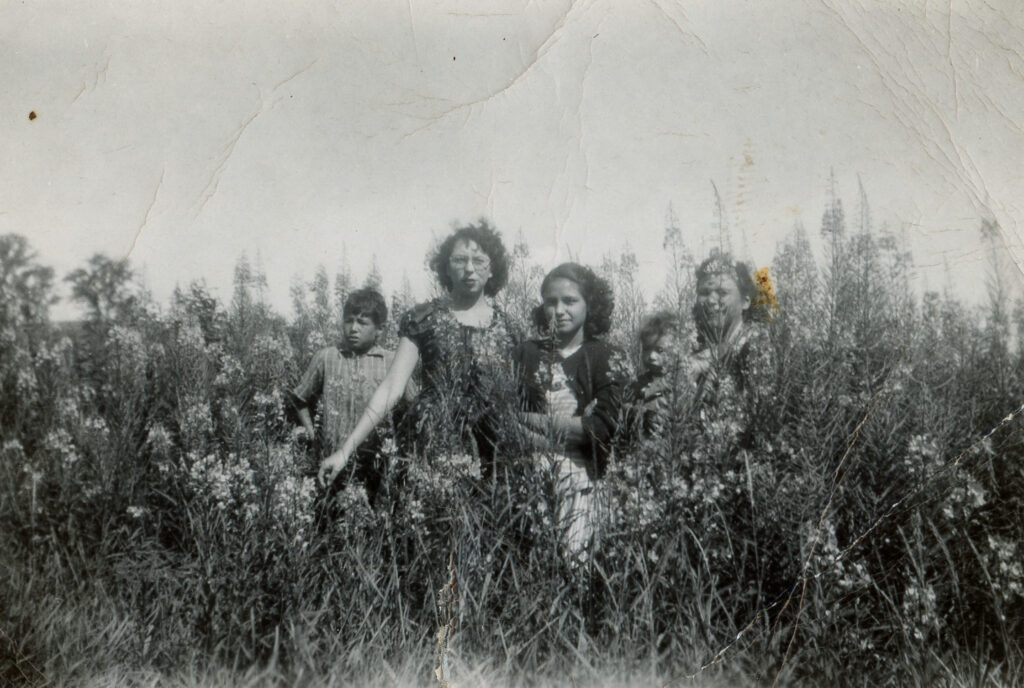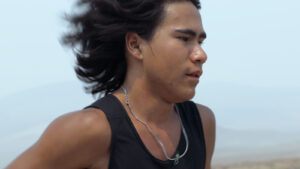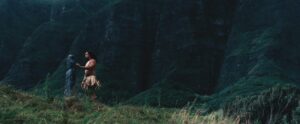Jared Lank and his mother in the ’90s
By Jared Lank
Growing up, the start of November always meant a few specific things for me:hunting season and a lot more time spent around the table on those early winter evenings with my dad and my great uncle playing Rummy 500, drinking Red Rose tea and eating luskinikn. It’s a time of year that consistently feels like a return to normal after the sweltering heat of summer. A time to reflect and recollect in the warm embrace of wood fire. It was in these moments that my father and uncle reminisced about how they grew up. I was fortunate enough to listen in and learn about my family; about how my great-grandparents left the rez in Nova Scotia and became farm hands in Aroostook county, and eventually made their way to southern Maine, where we live today. I learned about how they lived, what their world was like, and what being Native meant to us. I loved those nights. To this day I still look forward to the first frost and any excuse to light up our wood stove.
November also signaled the early days of the school year. As an off-res, mixed Native kid in Maine, I always struggled with the duality that world around me forced onto my identity. When I’d look in the mirror, I couldn’t help but question my place in those family stories as a pale skinned kid with blue eyes. Being one of the only Native kids in my tiny K-8 school, that stigma was reinforced every day as I walked by the giant 10-foot “Arundel Indians” mascot plaque in our school hallway. The Indian I was at home wasn’t the boy I was at school.
In the 90’s, the only Natives we learned about in the classroom were the western tribes and stereotypical caricatures. Definitely not Mi’kmaq people. When it did occasionally come up that I was, in fact, an Indian, it came with a classroom of kids (and teachers) all telling me I didn’t look like the Indians in their favorite westerns, or the Plains Indians in our textbooks. It taught me to keep my mouth shut. It really got to me and, after a while, I started to believe them. I’d sit at that table with my dad and uncle, and separate my own life from those stories. I was living in a white world where the only other Natives I knew were my family and we sat around drinking tea, playing cards, and hunting. I loved it, but this life didn’t align with what the world around me was constantly telling me about it meant to be Native. It took me a long time to unlearn that shame and learn to be proud.
I chose the film Powwow Highway as the film to pair with my Gram’s luski recipe for a couple different reasons. I think at the surface I was drawn to it because of its deeply ’80s aesthetic quality and tone — It’s the exact type of film that would be playing in the background on the old CRT console TV in my uncle’s apartment while we duked it out over a game of hold ‘em. There’s a comfort there that I can’t quite put my finger on, but it has a unique ability to transport me back to those days.
There’s a deeper significance though. Films like Powwow Highway represented a new way of understanding my own identity as it related to Indians on the screen. When I first saw Powwow Highway, It felt like one of the first times I saw glimmer of myself and my family in the characters being portrayed on the screen. Philbert (Gary Farmer) felt like the perfect melting pot of my uncles and cousins into one persona. I felt a deep resonance with the dynamic between him and Buddy (A Martinez), a hodgepodge of emotions between anger, shame, laughter, and pride that encapsulated my own struggle to reconcile my identity with the world around me.
Luskinikn is Mi’kmaq bannock — a type of quick bread. In a way, it embodies this same essence of Native representation in films. It’s a food now loved, but originally conceived in the shadow of ruthless colonization. It’s a testament to Native pragmatism and perseverance. A powerful reminder of the importance of sharing a meal.
Today, as I embark on the journey of writing my own films, I often think back to these nights spent with family sharing stories over a warm meal and tea. My Gram’s Luskinikn always acted like a catalyst for a story, its smell transporting us all back to a deep shared history, acting as a common ground to reminisce and conjure our ancestor to the table with us, transporting us all through the ether of time. I hope that by sharing this recipe with you, it can do the same.

Grammy’s “Micmac From Way Back” Luskinikn Recipe
INGREDIENTS
4 Cups Flour
4 Tsp Baking Powder
1 Tsp Salt
20 Tbsp (1 ¼ Cup) Shortening or Lard (my Grammy used Crisco)
1 Cup Water
DIRECTIONS
Combine dry ingredients into mixing bowl.
Add shortening and lightly knead into dry ingredients.
Slowly add up to 1 cup of water while continuing to knead and fold into a ball until it holds together.
Form dough into a roughly 1–1 ½” thick loaf on an ungreased cookie sheet and score into equal square parts with a sharp knife.
Bake in a preheated 350-degree oven for 40–50 minutes or until lightly golden.
Remove from the oven and lightly tap. If it feels more hollow than soft, it’s done.
Serve with butter and jam with a hot cup of Red Rose tea over a game of Rummy 500.
2025 Native Lab Fellow Jared Lank is a Mi’kmaq filmmaker from Maine. His existential works explore themes of cultural erasure, myth, and resilience. In 2024, his debut short film, Bay of Herons, was an official selection of the Sundance Film Festival, and he was featured in Filmmaker magazine’s “25 New Faces of Independent Film.”











